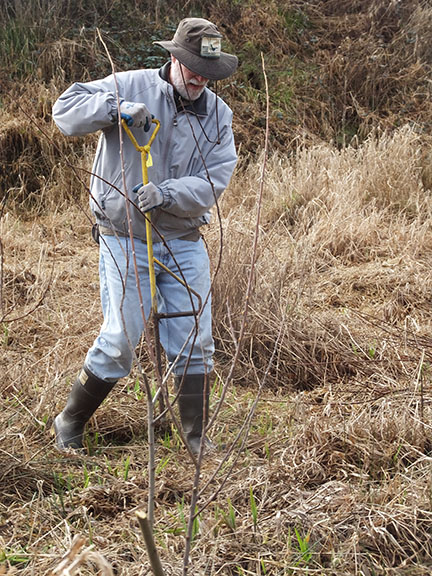On a warm “June-uary” day last week, several hard-working volunteers turned out for a pleasant late morning of collecting and planting willow stakes at NCLC’s Thompson Creek and Stanley Marsh Habitat Reserve in Seaside.
[wc_clear_floats]
[wc_row][wc_column size=”one-half” position=”first”]
[/wc_column][wc_column size=”one-half” position=”last”]
[/wc_column][/wc_row]
Willow stakes were planted along Thompson Creek near the site of a former beaver dam that blew out last January. The willows will help to provide shade to this coho salmon spawning and rearing habitat, shade out invasive grasses that have established in the area, and, hopefully, entice beavers into rebuilding a dam in the area.
Local restoration experts Doug Ray and Austin Tomlinson started the day early by collecting willow stakes from another part of the habitat reserve, an area that was densely planted with willows in years past as part of on-going restoration efforts. Thinning here provided an ecological double whammy: it provided some open space in a known bird flyway while yielding the willow stakes used to bolster the riparian habitat along Thompson Creek.
More than one volunteer mentioned how easy it was to plant willow compared to removing invasive species like Scotch broom. In fact, these super volunteers planted so quickly that we opted to collect additional willow stakes to plant. Volunteers learned how to collect willow cuttings; that is, where to cut the parent plant for its health and that of the willow cutting. Click to read more about the journey of Thompson Creek’s coho salmon from the ocean.









Comments